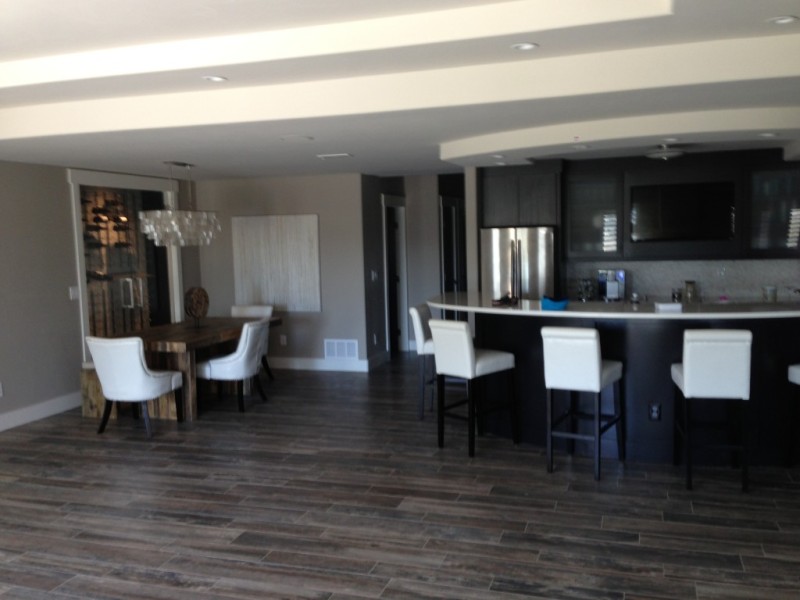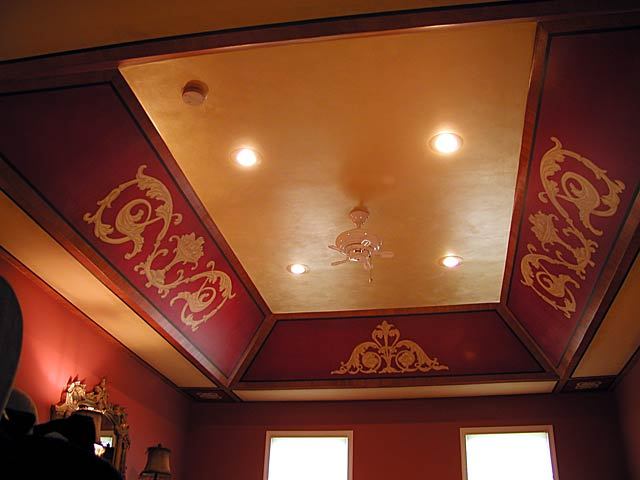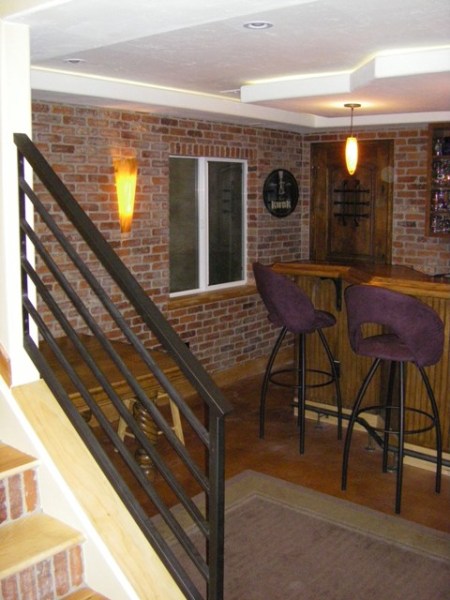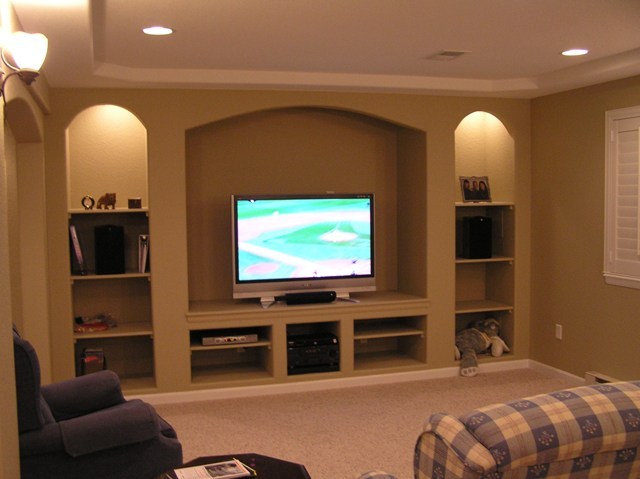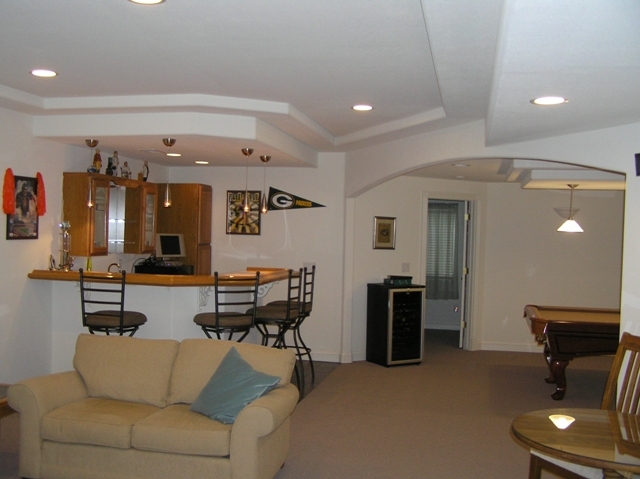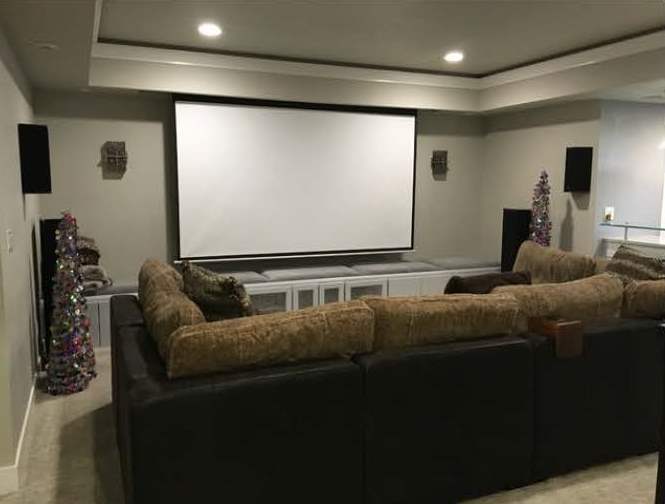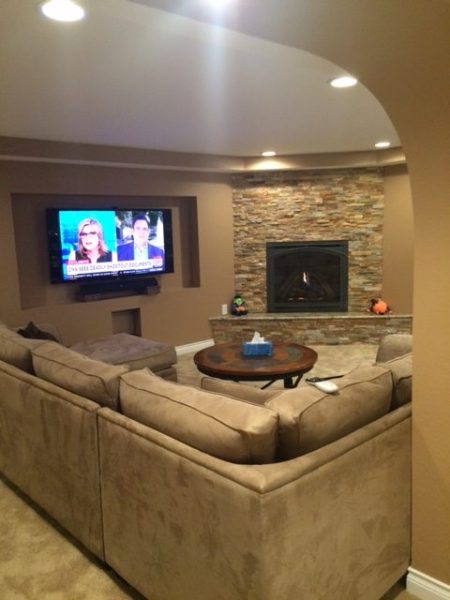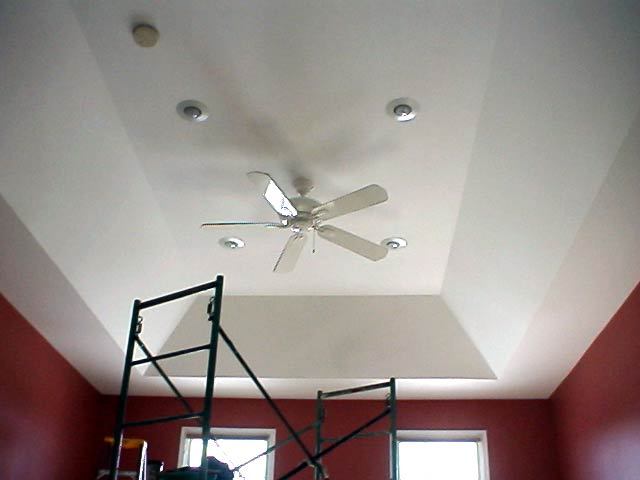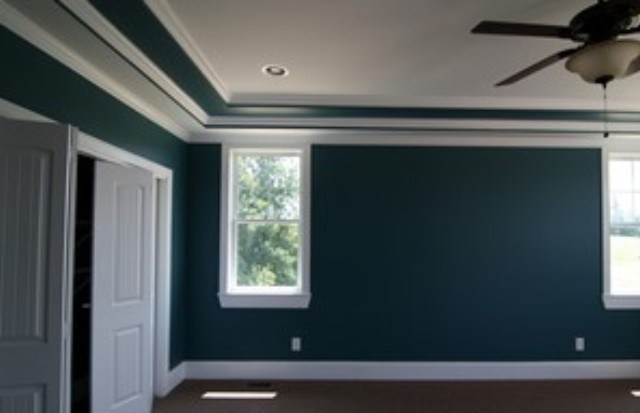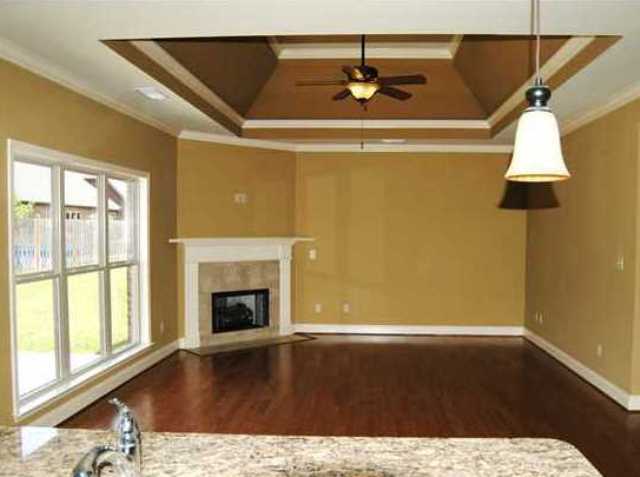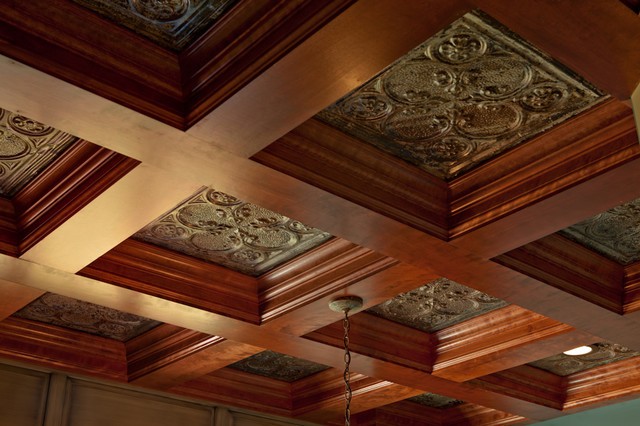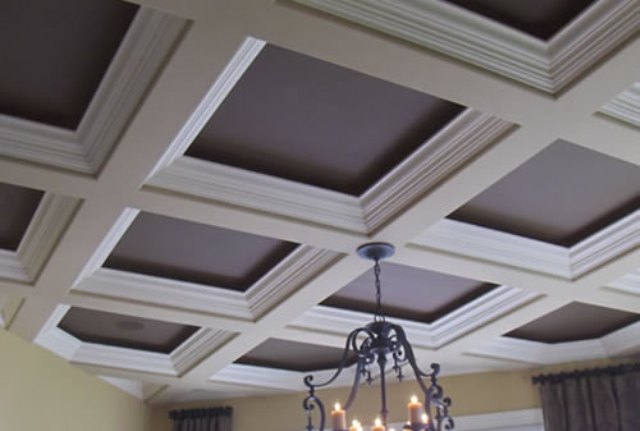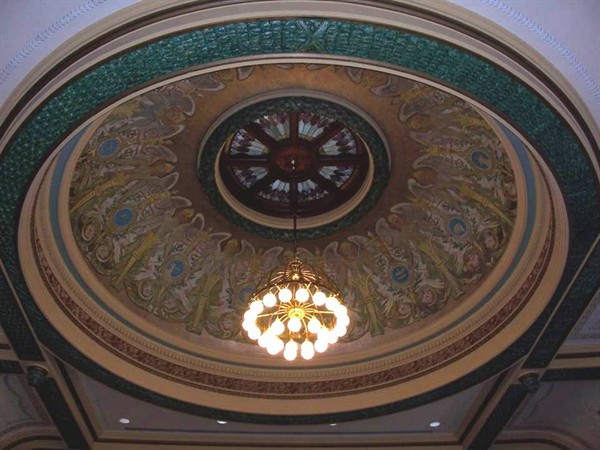Just to be sure we’re cooking with oil here; I’ve displayed many photos here but the ones below are just examples of what I can do with the ceilings. Some are called a “tray” ceiling but you’ll see below a true tray soffit. Most are really just a normal soffit but if wrapping equally around the area/room to help take your eyes off of things when in a basement. Some can be 2 step or even 3 like tiers and although they can be plain, some can have LED rope lighting hidden behind the crown molding offset a couple inches from the ceiling to glow against it. Lighting effects can be done in many ways to build the ceiling soffit type differently but that’s an entirely different subject.
Soffits in basements are one way to hide ducts, pipes and beams and the other soffits you may see are false soffits to create the appealing finish by way of creating an optical illusion sort to speak too. But the photos below are more of what is really meant by tray type ceiling which is anything that appears as an inverted tray. In CAD it is known as a sloped soffit as well.
I have done coffering in design level D & E many times but let’s make sure of the architectural term coffer first as its mentioned politically wrong at times. Here below are common types of coffered ceilings below that I provide in the higher design levels. These can be construed as a soffit and framed as a soffit either painted with crown molding or with wood veneers with or without wood crown molding.
You may read up at this link about the term “coffer”. But any ceiling treatment goes in a design after walls and such are set due to the additional complicated CAD components being added. Not so easy to move all these around when drawing a design if walls and other CAD objects get moved over and over again but will add in ceiling soffit types as shown or even coffered ceiling, if I have all the walls and areas the way you want. If so, indicate we are done moving things in your design and I’ll move on to dressing up the ceilings and then adding lighting if I have not done so already. The following are just more types of complicated coffering and I don’t attempt to draw these in any plans and you can see why.
In closing, the following dome or round ceilings for ceiling soffit types can be built and I apologize if I can’t always show these in the CAD 3D views due to the limitations in the CAD software but I will note these on any plan.
Overall, ceiling soffit types are needed to dress up a design and if you want your basement to look more like an extension of your home, they are used for eye appeal and to hide ducts, pipes and beams. If you wish to know more, merely write to me and ask. You can also send me images of what appeals to your taste. Be sure to read my post “Basement Soffits and How to Build them” but before you build, read this post “Basement Finishing 102“and I do hope you found all of this information helpful.
USA & Canada 720-220-4447 john@basementdesigner.com
Contact Me To Request Free Quote
